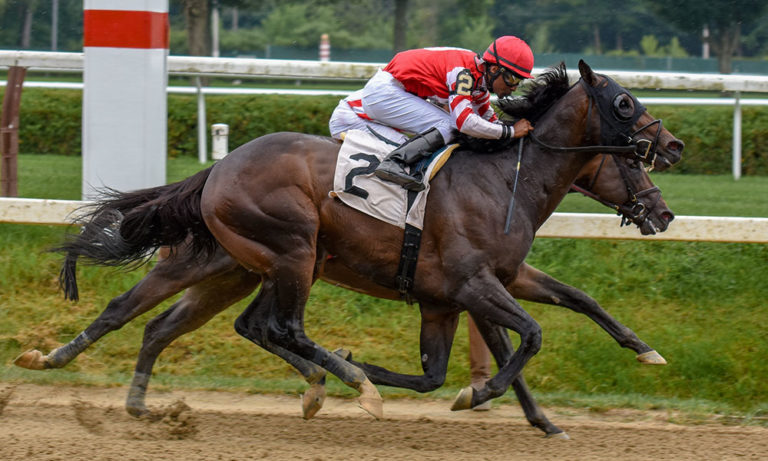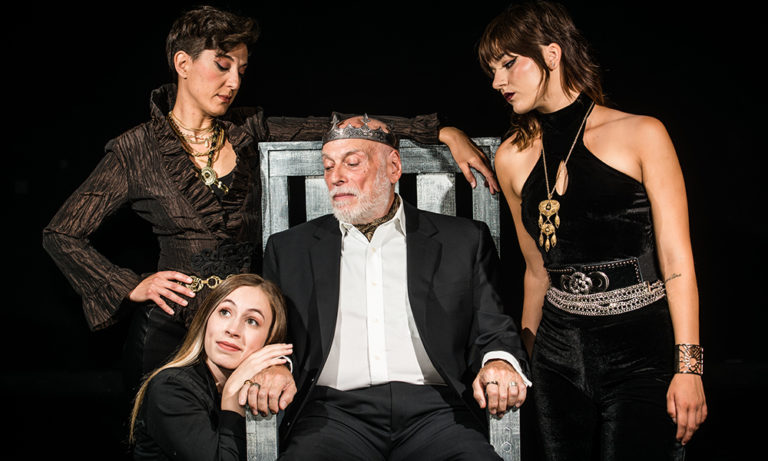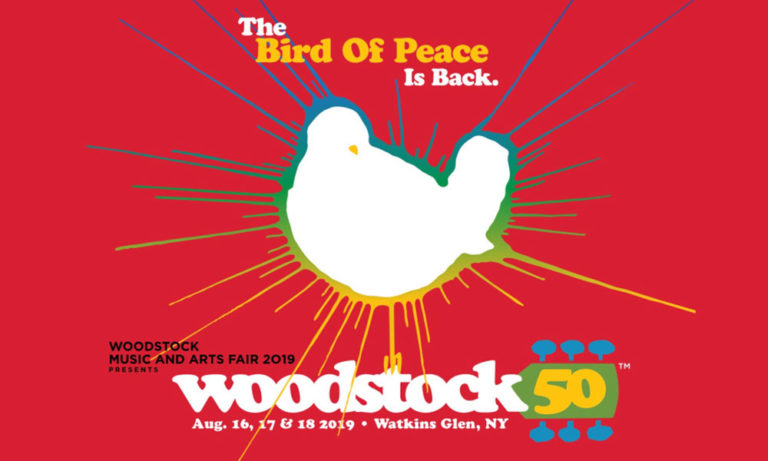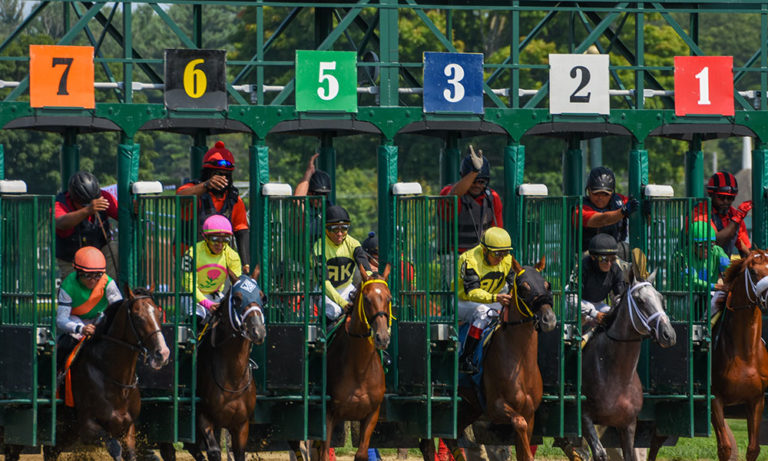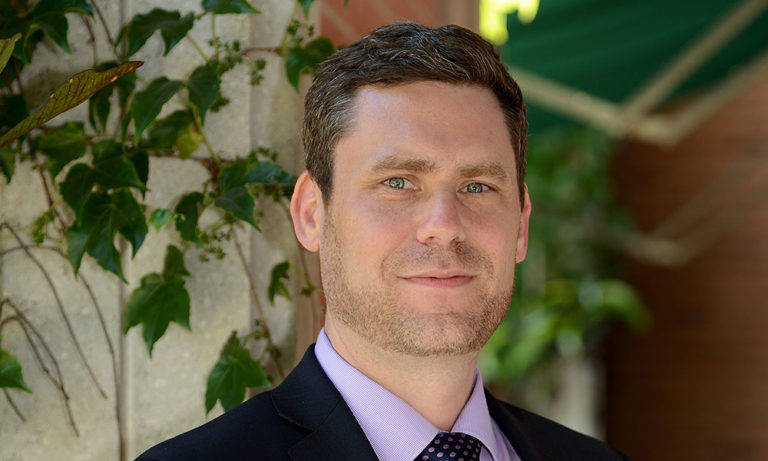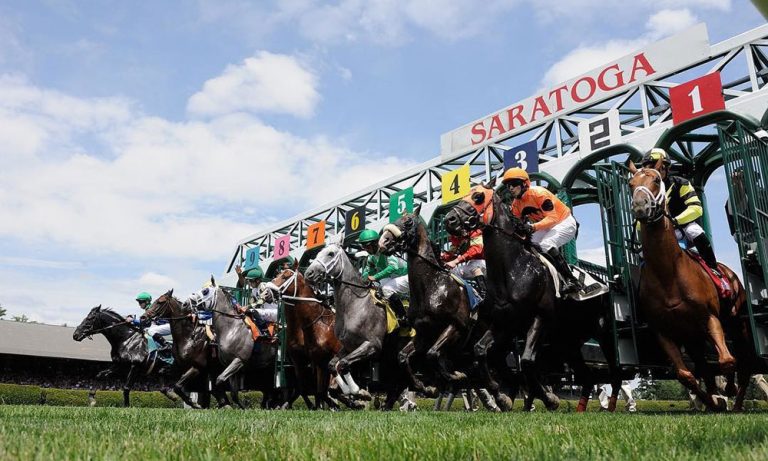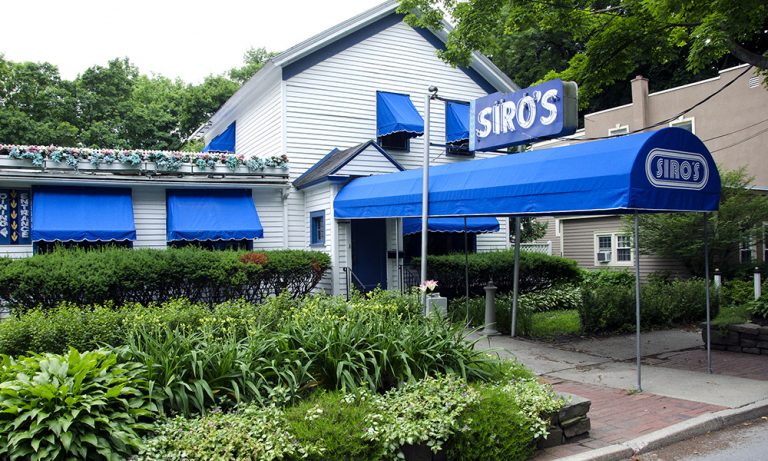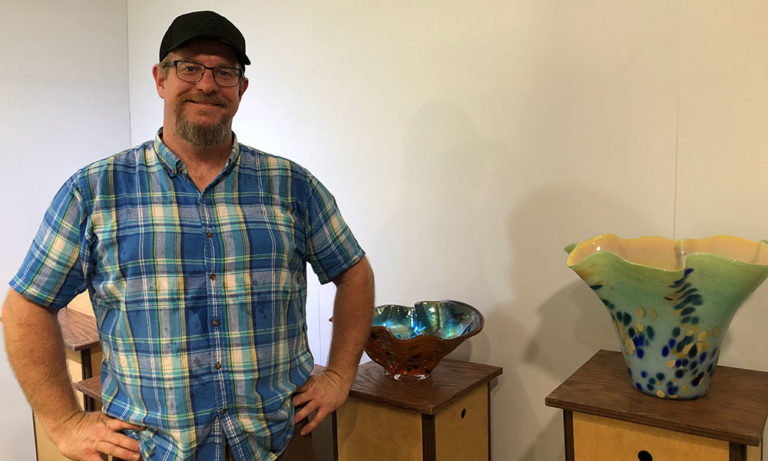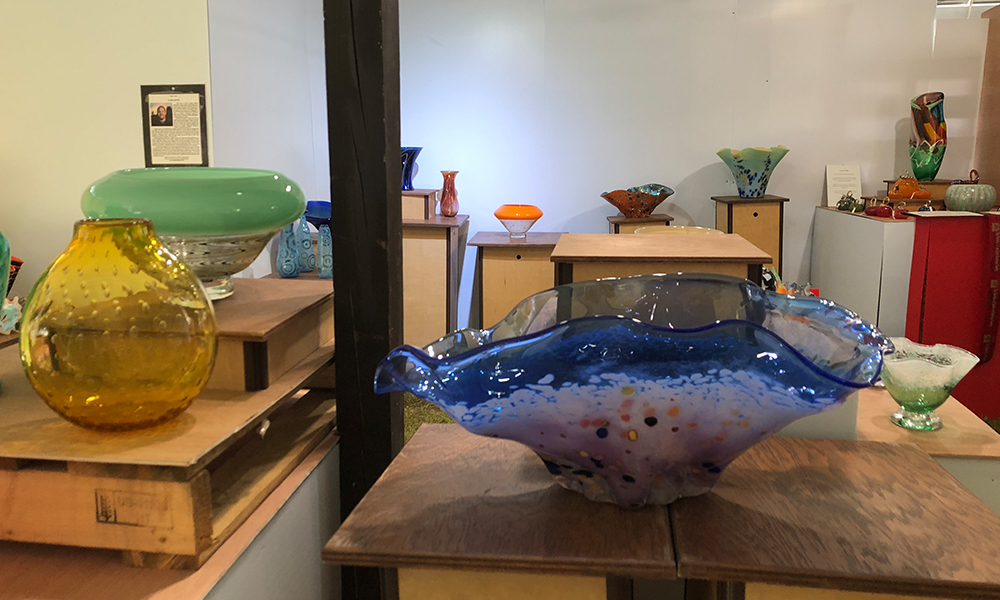David O’Rourke was named New York Racing Association CEO and president on March 26 after serving that role on an interim basis for two months following the resignation of Chris Kay. O’Rourke has been with NYRA since 2008, first as director of financial planning then vice president for corporate development. In 2013, he was appointed senior vice president/chief revenue officer. In that role, he developed NYRA’s business strategies in a variety of areas, including industry relations, simulcasting, television, and account wagering. NYRA has expanded its television presence to the point where there will be more than 500 hours of NYRA racing telecasts this year. NYRA Bets has expanded to more than 30 states.
Beginning Thursday, O’Rourke, 45, will oversee his first Saratoga meet. On July 2, O’Rourke sat down with Daily Racing Form’s David Grening to talk about a variety of topics.
Daily Racing Form: You’ve been with the company over a decade, but obviously in roles that were different than this one. What part of the business have you spent most of your time trying to learn?
David O’Rourke: The horsemen side, absolutely. The backstretch, trainers. That’s the fun part now. For years, I was on the content, wagering side, television, and now it’s expanding the ownership and how do we bring more owners into the game. It’s a challenge. It’s something we’re starting to do some background work on, and I think over the next year or two you’ll start seeing us organize our operations and potentially the facilities as we talk about development or adding additional spaces with that customer demographic in mind.
DRF: You take over the stewardship at a crucial time for NYRA and the industry as a whole. It seems like we’ve been talking about construction of a new hockey arena/retail space as well as Belmont Park redevelopment for about 18 months. So far, those of us on the outside haven’t seen anything. Can you update us on those projects?
O’Rourke: If you look out the window, they’re not digging a hole yet. Obviously, we’re moving up to Saratoga earlier for a lack of a better term, to get out of the way so the construction can start in earnest. All the information that we have still points to a July groundbreaking, so we look forward to that. It’s going to create some challenges over the next year or two, but in the long run I think it’s a good thing for the property and Long Island, keep the Islanders here, and get some more foot traffic on our property and increase utilization.
DRF: One reason NYRA adjusted the Saratoga schedule was in anticipation of construction at Belmont this spring as you mentioned, but it seems like NYRA, for years, was always looking to go to a five-day race week upstate. What do you hope that schedule does for you?
O’Rourke: For years, it has been a piece of conversation. We were the last organization to run six days a week, and I could go through the foal crop and the difficulty there, but there’s also the side of the operation itself. Being up there for six weeks, six days, it’s a strain on the labor force as well. From an academic side – and I come from the finance, wagering [side] – when you model it out, five days does look good. So there is the potential that it will improve our business and bottom line.
But with Saratoga, in essence it’s an ecosystem, it’s the town that works with the track and the community. While it might work for us financially, we have to make sure it works for the rest, holistically, up there. So that’s a massive component to contemplate. We have the opportunity because of the construction to test this. Part of that test will be how will it impact us outside the gates in terms of the community. I’ll see the numbers, but we’ll need to have a very open dialogue with the business owners and the community leaders up there to see how it impacts the community as a whole.
DRF: Obviously, handle is one metric we use to measure the success of a race meet. What other metrics will you use to measure the success of Saratoga 2019?
O’Rourke: That’s a great question. There’s KPIs [Key Performance Indicators] not just on handle but food and beverage, there’s attendance, people in seats. But what I’d like to begin is a more comprehensive method of customer-satisfaction ratings. That’s something we’re just getting on; you might see it later in the meet, it’s definitely something we’ll be rolling out next year. It’s very straightforward how much people are wagering on the product, but the overall experience, how do you measure that? That’s something I want to get smarter on, it’s not something that’s in my background, but Gordon Lavalette and the marketing team definitely have some experience there, so I’m challenging them in that area.
DRF: How concerned are you that with the larger purses at Ellis Park combined with added expense for out-of-town horsemen to be in Saratoga longer that they’ll either be reducing the number of horses they’re shipping to Saratoga or may not come at all?
O’Rourke: In terms of competition for horses, it’s not so much just a near-term challenge or concern, this is something that we’re strategically preparing for in the long run because in Kentucky the purses are obviously going up. It’s not just at Saratoga, but it’s at Belmont and our other meets as well. In the near term, we’re trying to create an environment that’s as welcoming as possible. In the long run, we’re going to have to incorporate this into our planning process and everything we do, including what we do with NYTHA [New York Thoroughbred Horsemen’s Association]. To encourage horsemen to race in Saratoga you are correct, it is the cost of operating up there. The purses do offset it, but if other jurisdictions’ purses increase, that advantage might be mitigated slightly. We do have the town to sell. This is something that isn’t just 2019. This is something we need to contemplate in our long-term strategy over the next five to 10 years.
DRF: Speaking of handle, you’ve opened up the late pick five to all bettors and at some point during the Saratoga meet you hope to replace the traditional $2 pick six with the in-vogue 20-cent jackpot pick six where a bettor needs to be the only one to have all six winners to take down the whole pool. What were the impetus for these changes?
O’Rourke: Customer demand and the marketplace. I believe we were the last major jurisdiction offering the $2 pick six, and there’s tradition to that bet and that bet at Saratoga historically has worked out once in a while with large carryovers. But all the information we have and the feedback we’ve gotten [shows] lower-base minimums and high potential outcomes, for lack of a better term, are what the customer wants. So our intention is to launch the Empire 6 during Saratoga, and we look forward to seeing how it plays out.
DRF: And the decision to open up the late pick five?
O’Rourke: For years, we were hesitant to launch a late pick five in terms of the late pick four, which was one of our most successful pools. So the opportunity came up where we were launching a new ADW platform and looking for a differentiator, that product slid into that mold for a period of time. In my opinion, that has kind of played itself out and I would like to open that up to all of our bettors because I believe it is one of our best bets, it usually incorporates our best races. We think it’ll do really well in the open market. Now, the challenge for the NYRA Bets people is to focus on something else.
DRF: The 1863 Club is the newest renovation to Saratoga this summer coming a year after The Stretch was introduced. I believe the cost to be at either of those spots is rather high. Has there been a demand for these higher-end hospitality areas?
O’Rourke: Yes, there has. What we will monitor is how does the demand shift around the facility. Is one area filling up at the expense of another? We didn’t see much or any of that with The Stretch, but 1863 is obviously a lot bigger. It’s at different price points; there’s suites, there’s the club, and there’s the banquet area, which really is a replacement for the tent. Cannibalization is something we’re keeping in mind as we look at how the numbers play out.
When you look at the property at Saratoga, 1863, as far as my vision would be on the property, that’s the last piece of real estate to really develop there. The rest of it will be refurbishment, kind of polishing the stone. We monitor all of our demand and our price points. We believe the demand is there, the sales are very good so far, so it looks good.
DRF: Are there concerns and/or are there any plans to create new amenities for the fans who want a more affordable/regular option to attend a day at Saratoga?
O’Rourke: Absolutely. This season was somewhat baked by the time I had a chance to get in here. A lot of the focus up there was 1863 and the five-day meet. So that has taken a lot of the management’s focus. I want to look at the backyard experience again. How many tables are back there? Are there enough or are there too many? What are the price points of the offerings that we offer back there?
Saratoga, in essence, is the incubator. There are very few, if any, racetracks that have that type of attendance. In my experience in management here at NYRA countless number of people in this industry that are fans, that backyard is where they came from – there’s a good amount from this backyard as well at Belmont. That’s something we need to cultivate, keep the character of it – because Saratoga, you have this high-end price point then you have the backyard for the families and fun and everyone’s getting close to the horses. So that’s something absolutely we’re going to look at.
DRF: Are you still offering the $100 picnic table purchases?
O’Rourke: We are. That is a divisive strategy back there. But the people that use it really appreciate the ability that they don’t have to wake up at 5:30 in the morning and run for the table. But you want to keep the experience for the people that do. So, yeah, we will maintain that.
DRF: A few years ago, former NYRA president Chris Kay introduced the Saratoga Hall of Fame complete with a red jacket ceremony that was held the day before the Travers. Will that continue this summer, and in the future, and if not, why not?
O’Rourke: That will be on hiatus for this year. I’ve had some preliminary discussions and look to further those discussions as I get up north about the selection process. Personally, I do think a Saratoga-specific award is a cool thing, it’s a good thing. It’s how the candidates are brought for voting and ultimately voted on [I want to study]. While the Hall of Fame has a very flushed out, detailed process, I think something akin to that for this type of award would be very good. I just want to put it on pause for a year and work with my A) PR group and B) people in the industry who should be voting on this. I’m not sure I would qualify.
DRF: Kay was a strong proponent of night racing at Aqueduct and Belmont. How do you feel about night racing at the two downstate tracks?
O’Rourke: I think it’s very interesting, but it is a cost-benefit analysis. At Belmont, we’re currently going through preliminary planning, which essentially becomes a menu list of options ranging from fundamental investment required for the facilities envelope to amenities that you’d place in. Night racing slots in just before amenities. It could drive revenue, it could drive traffic, but this is a very large track, so there’s a significant cost to it. It’s definitely something we’re still researching, but it’s not definitive yet whether we’d go in that direction.
DRF: Obviously, there were plans for redevelopment of Belmont Park’s buildings and track that might not have included your input. Now that you’re in the position you’re in, have you altered those plans or has the process of getting this project started changed?
O’Rourke: There were concepts back in January, and we were in the middle of an RFP process for an owner’s rep and an architectural firm to get into detailed pre-planning, so the timing was fine in that matter for whatever input I might have. While we did have concepts, now we’re getting into detailed planning. If anything, I probably changed the focus a little bit more to a pragmatic point of view. The Belmont facility itself is 1.2 million square feet, what are the fundamental investments required for that asset in the long term rather than an integrated conceptual plan? Those are the answers I’m looking for first, and then the amenities we’ll layer on with that.
DRF: How about the tracks themselves? Is there anything you anticipate happening with the surfaces, either redoing them or there has been talk about a synthetic surface at some point?
O’Rourke: At the moment, it looks like it’s the tracks that might be the first thing that we tackle. We want to redo the tracks to improve drainage, to improve irrigation, and in doing that you look at configuration. Will we ever be racing in the winter here? If that decision wasn’t made in the near term you wouldn’t want to handcuff the management team in the long term. So we’re looking at different configurations . . . Right now, its dirt, turf, turf and in conversations you might have heard there would be a synthetic on the inner at a mile. Personally, I never liked that one just because the distance . . . we challenged ourselves can we go turf, dirt, turf. That dirt course could it be synthetic in the future if necessary? Even if it’s not synthetic, is it out of the shadows so you could use it in the winter? Those conversation are going on right now. That’s actually a really fun exercise. We anticipate in the fall having some of these preliminary answers to preliminary planning and options.
DRF: Have you given any thought to the wrath you might receive if you made the last leg of the Triple Crown on a synthetic surface?
O’Rourke: That is a decision that is way above my head. If the industry in the future were to move back toward synthetics I would just want to leave the next management team in position where they could convert. I don’t currently see that occurring for us right now, but as we’re putting in this infrastructure for the next 50 years, are there things that we could do to make a conversion easier?
DRF: You recently made some management changes that are designed to continue NYRA’s organizational success. What do you hope Gordon Lavalette, Tony Allevato, and Jelena Alonso bring to their new roles?
O’Rourke: I worked with all of them for quite a while, I think they’re going to bring focus, commitment. We streamlined our team a little bit. Gordon’s moving over to a role he had with the [New Jersey] Devils and Prudential that he has the background for, so I’m excited for this, actually.
Tony Allevato has been with us for a few years. He’s taking on some of the duties I had previously. Tony’s got 20 years experience in this. They’re all seasoned executives, they’re a tight group, and we’re looking forward to a lot of challenges that we have coming ahead.
DRF: NYRA’s made a big push, and I assume significant investment, in getting your races on Fox and more television exposure. What was the goal in doing this, and have you found this to be a worthy investment?
O’Rourke: It’s given us a platform. We’ve been on TV for years on MSG, and we had a very robust simulcast. So a lot of the infrastructure was there, including the talent we use on television. Over the last few years, we’ve been able to position ourselves on Fox for 500 to 600 hours of television. We think that’s good for the sport overall because it gets the sport on mainstream sports programming. We were able to show Churchill with our tracks, that creates a nice flow to the show. With sports betting coming, not just in New York but nationally, to be on a mainstream network such as Fox we think that gives us a platform for revenue diversification. We spoke about handle as a metric to measure Saratoga – it is a metric, and it still is our primary revenue driver as a business, but I’m very focused on how can we increase the diversification of our revenue so we’re not so reliant on just the wagering dollar. It will likely always be our primary revenue driver, but can television sponsorship, food and beverage with 1863, can we diversify our revenue inputs, which would smooth out our financial performance over the years ahead?
DRF: You participated in hearings regarding sports betting. Nothing really got finalized at the last legislative session. What’s your feeling on if racing, NYRA in particular, will be included in the future offering of sports wagering?
O’Rourke: I believe we’ll be included in some form, to what degree [is] the question. However, in those hearings, one of my primary goals to convey was our history is essentially sports betting. At our fundamental core we provide sports-betting content, so I feel it’s extremely important for our product to be in the busiest store. These sports-betting platforms that are proliferating are well capitalized. They have a history in marketing in this area, so while we would like to partake in sports betting here in New York, particularly from the brick-and-mortar side, a huge part of our focus is having our content sit on these other platforms. We think it will diversify the customer that we can connect with and it will have a massive positive impact on the distribution of racing as a sports-betting product.
DRF: Are you hoping that the four places that have been granted approval for sports wagering will also offer your product?
O’Rourke: It seems that they will via their ability to cut agreements with the New York OTBs. What I’m articulating is more of a five-year vision, and mobile would have a huge piece of this. I think those four facilities would be a nice complement to the New York brick-and-mortar business if they decide to take horse racing. But ultimately I’m looking at the long game – and in the long game sports betting in terms of a mobile product offers us a big opportunity to reach a much larger audience.
DRF: As you know, The Stronach Group banned Hall of Fame trainer Jerry Hollendorfer from stabling, racing, and training at its tracks in the wake of him having four equine fatalities during Santa Anita’s six-month meet. Hollendorfer had been granted stalls at Belmont and Saratoga, and on June 23 NYRA reaffirmed its commitment to Hollendorfer. Six days later, NYRA reversed course. Why?
O’Rourke: Larry Best transferred his horses to Don Chatlos. NYRA was in internal conversations at that time. There was no board action, but there was an active dialogue. With Best’s decision to transfer those horses, we welcome Don as a trainer here. Those look like some very nice horses, and we wish him future success.
DRF: Many New York horsemen I spoke with worry that they could be next. Is NYRA considering putting in some thresholds regarding breakdowns, injuries, or fatalities at which a trainer could potentially lose the right to race, train, or stable here?
O’Rourke: Any changes in that area would be a result of the equine safety or racing committee, which I assume would be in coordination with the state, Dr. [Scott] Palmer. I haven’t heard of any modifications, but all our safety policies and procedures are evolving. If by chance something new was learned that could improve the environment for the animals here, we would research it and implement it.
In terms of our horsemen, we have a culture of an open dialogue, at least I do. Any changes, I can’t imagine there would be any surprises, and there would be a consistent conversation between NYTHA, the NYRA board, and the state vet and Gaming Commission.
DRF: In general, how conscious are you of the microscope now being aimed at Saratoga in the area of horse safety and are any extra precautions being made to ensure a successful meet in that area?
O’Rourke: We feel our policies and procedures are at the forefront in the U.S., so any changes or modifications I would leave to the experts. We’re obviously cognizant of the fact Saratoga is the premier meet in the country and that all eyes, good and skeptical, are on us in July and August up there. We love horse racing, we think it’s going to be a great meet, we’re going to do everything in our capacity to create the safest environment possible and where people can enjoy our beautiful sport, and that’s what were focused on.
DRF: Since June 9, the day after the Belmont Stakes, through June 30, NYRA carded 65 dirt races, only 12 had eight or more entries. In that same time frame, and counting off-the-turf races, average field size for a dirt race at Belmont was 5.76 horses per race. That’s lower than Churchill Downs (8.50), Parx (7.64), Laurel (7.04), Monmouth Park (6.48) and basically on par with Delaware Park (5.76). Why is NYRA having such a hard time filing dirt races?
O’Rourke: This isn’t new, it’s manifesting itself. Dirt racing has been a challenge here, specifically at Belmont, for a couple of years now. Martin Panza could give a more comprehensive answer to this, but there’s a scarcity of dirt horses currently in our inventory, with the rain that stressed that even further, which culminates into the numbers that you’re articulating, but it’s a significant challenge. It’s something as Martin’s looking at his program going forward we’re going to have to adjust and compensate for. I wish the weather would help a little, but in our game you can’t be completely reliant on the weather. It’s an issue we’re discussing, but it’s something you have to strategize . . . it’s not something to fix here and now. It’s more on incentives in the program, which trainers have what type of stock, so it’s not a quick answer but obviously we’re going to need to adjust slightly because those type of numbers are an issue 1) for the quality of the product and 2) for the economic results for the organization.
DRF: This spring you experimented with a 3:05 p.m. post on Thursdays. What were your preliminary conclusions on how that did?
O’Rourke: We were able to come to a TV agreement with Churchill. It sounded like a good idea with us and Churchill, the TV window would work well in terms of the operating overhead for doing that. Does that create more of a wagering marketplace in that time slot? The issue would be it rained basically every Thursday, but the Friday twilight cards for the ontrack experience worked better. It’s likely something we won’t do again next year. I thought it was worth a try. I don’t think it played out the way I thought it would on paper.
DRF: First Saratoga in charge for you, what are you most looking forward to?
O’Rourke: Saratoga and the experience of it is one of the reasons I love working in horse racing. I’m dying to get up there. It’s a long meet. The five days should help the work force, it’ll help me, gives us a couple of days off. Who wouldn’t want to be in Saratoga for an extra week?
This story originally appeared on DRF.com.

